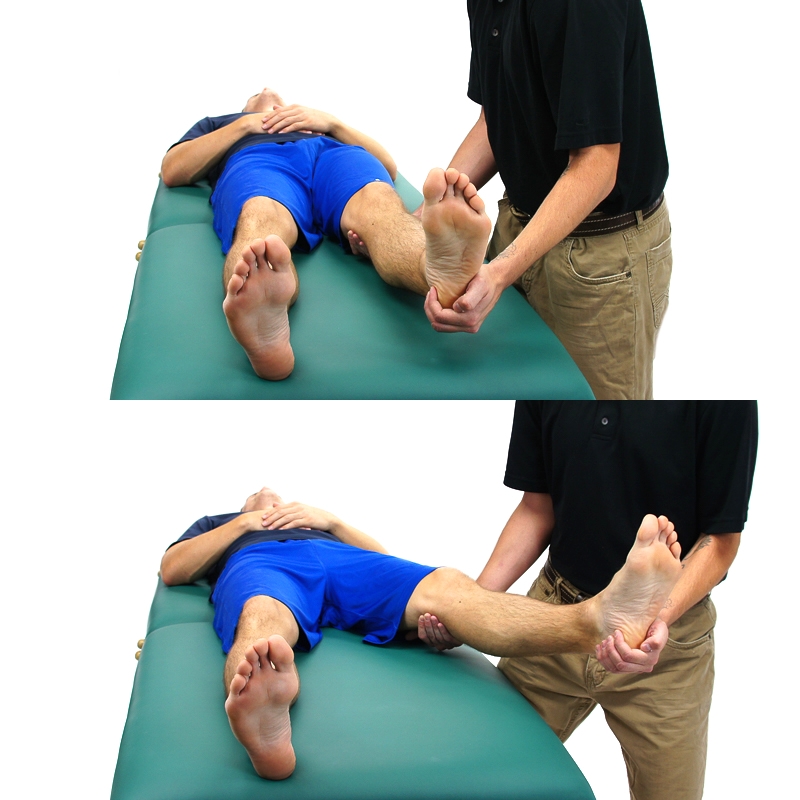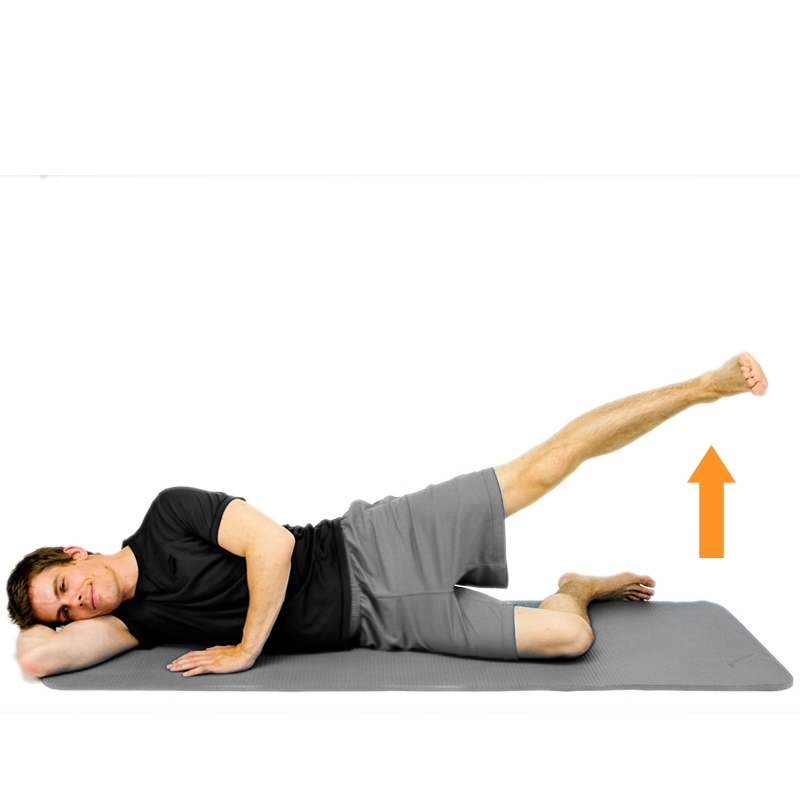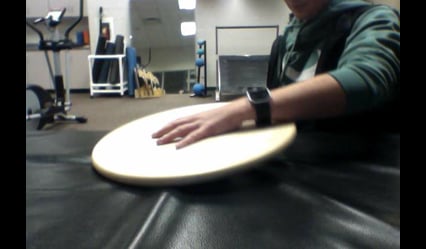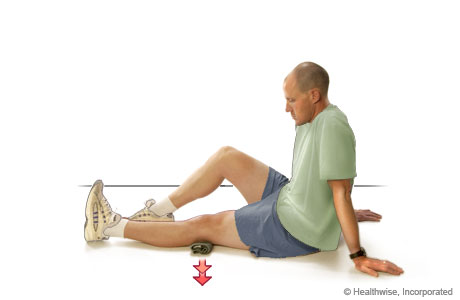Basic Exercise
PTA 101 Introduction to Clin Practice 1
Instructional Use Statement
The following information is used for instructional purposes for students enrolled in the Physical Therapist Assistant Program at Lane Community College. It is not intended for commercial use or distribution or commercial purposes. It is not intended to serve as medical advice or treatment.
Contact howardc@lanecc.edu for permissions
General Goals of Exercise
- Improves functional capacity
- Enhances metabolic and physiologic function of muscle
- Maintains or improves joint motion
- Enhances cardiopulmonary efficiency
- Enhances independent function of the body
- Affects strength, endurance, joint flexibility, coordination, and general sense of well-being
Active Vs. Passive Exercise
Active - Patient assists or performs independently using voluntary muscle contraction
Passive - Therapist or helper provides 100% effort to move the joint. Patient is unable or not permitted to actively use their muscles.
Post-surgical repair, pain, paralysis, paresis, or other medical precautions may allow a pa teint to engage in PROM-only exercise.
Considerations for Selecting Exercise
- Effect of gravity
- When a limb is moved against gravity, the patient will perceive the force of gravity and may try to help or resist the motion. Therefore, care should be taken to monitor for muscle recruitment in response to gravity when there are contraindication for muscle contractions.
- Muscles need to work harder to move against any force, including gravity. When it is relevant, a therapist may document "against gravity" or "gravity eliminated" to reinforce under what conditions the ROM activity was performed.
- Documenting patient position provides information about gravity. Consider hip flexion: The amount of force a hip flexor needs to produce to move the hip in sitting or standing versus side lying is different because of the change in force (e.g.., gravity) on the moving limb.
- Amount and type of stability and support necessary
- Stability: A therapist must position their hands or use devices to offer a stable base from which to move. The exercise and the hand placement aims to avoid, limit, or prevent movement at the stable base, localizing the motion. When a therapist is providing stability, they may do so for the following reasons:
- Prohibit, limit, or avoid movement
- Protect the site of healing fracture
- Protect soft tissue subject to extensive trauma or damage
- Protect healing musculotendinous structure
- Prohibit movement of an uninvolved joint or body part
- Support: A therapist may position their hands or use devices to promote movement. When a therapist is providing support to a moving area, they may do so for the following reasons:
- Relieve stress to joint or body area
- Control the weight of extremity or body part
- Compensate for muscle loss
- Optimizing patient participation
- Avoid injury and prevent increased symptoms

https://www.hep2go.com/exercise_editor.php?exId=27177&userRef=gciaake
Take a look at the image above. Notice the patient is participating in hip abduction passive range of motion. The therapist is providing stability to the knee to prevent it from moving and to maintain stable hip motion in the frontal plane. The therapist is providing support at the heel to help control the weight of the left leg during the passive range of motion activity.
Cardinal Planes of Motion
Three planes of motion, using anatomical position as the beginning reference point.
Review the embedded video (approximately 2 minutes) to reinforce your understanding of cardinal planes of motion
Note: the diagonal patterns described in the text and video are covered in PTA 132L/133L
Types of Exercise for ROM
- PROM exercise: movement created by an external force to maintain unrestricted joint range (versus passive stretch used to increase joint ROM). The image above of the therapist performing hip abduction is an example of PROM
- AROM exercise: movement produced from active, voluntary contraction of muscle(s) to increase strength and endurance. The image below is a patient performing hip abduction AROM. Note how important it is to document the patient position. In this image, the patient is sidelying, so hip abduction is against gravity. In the PROM example, hip abduction is performed in supine to be sure that it is gravity-eliminated, which will place minimal to no force on the hip abductor muscles as they shorten and lengthen.

https://www.hep2go.com/exercise_editor.php?exId=124&userRef=gciaake
- AAROM exercise: movement that combines voluntary contraction of muscle(s) and an external force to increase joint ROM. The image below of the patient using a strap to assist with hip and knee flexion is an example of AAROM

https://www.hep2go.com/exercise_editor.php?exId=66920&userRef=gciaake
PROM
Indications for PROM
- Patient unable to perform active exercise
- To avoid active exercise of unhealed fracture
- To counteract negative effects of immobilization
- To evaluate joint ROM and flexibility
- To provide sensory stimulation and awareness
- To reduce cardiopulmonary stress
Videos for PROM
Notice the body mechanics and positioning demonstrated in the video
Self-Check
Indications for AROM
- Patient able to voluntarily contract, control, and coordinate muscle(s)
- No contraindications (cleared medically, surgically, functionally)
- Benefits desirable for fulfilling patient's goals
Benefits of AROM
- Maintaining physiologic elasticity, strength, and contractile endurance of muscle
- Increasing local circulation
- Increasing sensory awareness
- Preventing complications in the cardiovascular system
- ankle pumps are an example of an AROM exercise commonly used to prevent blood clots (thrombus) in the lower extremities due to deconditioning or a post-operative state (video less than one minute)
- Maintaining structural integrity
- Improving muscle strength
- strength is enhanced through AROM when the patient has difficulty moving the affected limb against gravity
Considerations for AAROM
- Requires patient to actively contract muscle(s)
- Requires external assistance (manual, mechanical and/or gravitational forces)
- Requires modifying amount of assistance in response to patient's ability to move through the range
- Requires that the caregiver follow previously discussed techniques
Here is an example of how someone may use a device, such as a wobble board, to help a patient with AAROM at the wrist. As the patient moves the wrist, the board will tip in the direction of the movement, assisting increase motion. Note how the patient will need to activate the wrist first to get the board to "wobble" in multiple directions.

https://www.hep2go.com/exercise_editor.php?exId=53598&userRef=gciaake
Preparation for ROM
- Examine and evaluate patient
- Obtain information from medical record
- Determine goals and type of exercise to use
- Introduce yourself and explain the purpose, risks, and desired outcomes
- Obtain patient permission
- Position the patient and yourself
Principles of PROM Exercise
- Provide gentle, firm support and proper stabilization
- Move through entire unrestricted, normal ROM of a joint (end feel)
- Give special consideration to multijoint muscles
- Give special considerations to how the patient's diagnosis affects the exercise program, e.g., SCI, THR, CVA
- Position patient properly
- Perform passive movement in the direction opposite to the movement that the muscle would produce
- Determine purpose (goals) and sequence
- Perform exercise slowly and smoothly
Joint End-Feel
|
Normal
|
Abnormal
|
|
hard - normal bone to bone
painless
|
abnormal bone-on-bone
indicates advanced degenerative changes
|
|
soft - soft tissue compression
|
spasm (early or late)
protective response during motion
|
|
firm - springy, elastic resistance
|
empty
pain during motion without mechanical/muscle resistance
|
|
|
capsular
hard or soft - tissue stiffness occurring earlier than expected in the ROM
|
Types of Muscle Contractions
Three types:
- Isotonic: visible joint movement
- Eccentric: fibers lengthen
- Concentric: fibers shorten
This video shows examples of upper extremity concentric and eccentric exercises. Approximately 5 minutes
- Isometric: no or little observable joint movement and no significant change in muscle length; with or without external resistance
- these exercises are often called "sets", referring to a muscle setting response. Quad sets, hamstring sets are descriptions of isometric exercises for these respective muscle groups.

Video less than one minute
- Isokinetic: requires specific equipment to control the speed of patient's contractions and produces variable resistance throughout the range
This is a brief description of an isokinetic exercise and isokinetic exercise equipment used to control speed and resistance (Approximately 6 minutes)
End of Lesson




![]()
![]()

